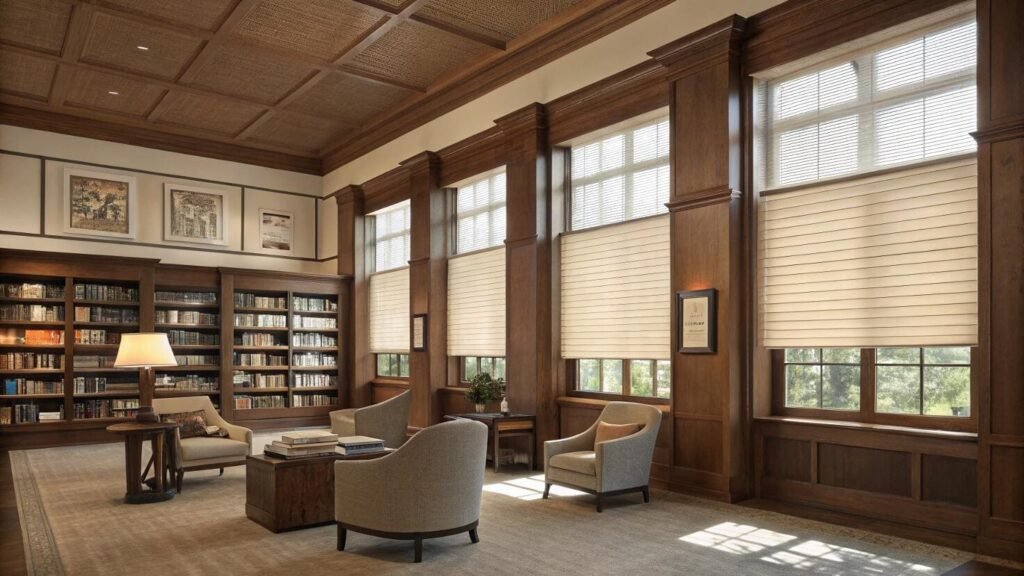You're specifying motorized blinds for your project but concerned about noise disruption in sensitive environments like bedrooms, conference rooms, or patient care facilities. Traditional motors can produce distracting sounds that defeat the purpose of seamless automation.
Ultra-quiet motorized blinds utilize advanced tubular motors operating below 35 decibels, comparable to a soft whisper. Premium systems like Somfy Sonesse[^1] and Lutron's DC motors incorporate precision engineering, sound dampening materials, and optimized gear ratios to deliver whisper-quiet operation while maintaining reliable performance and extended lifespan.
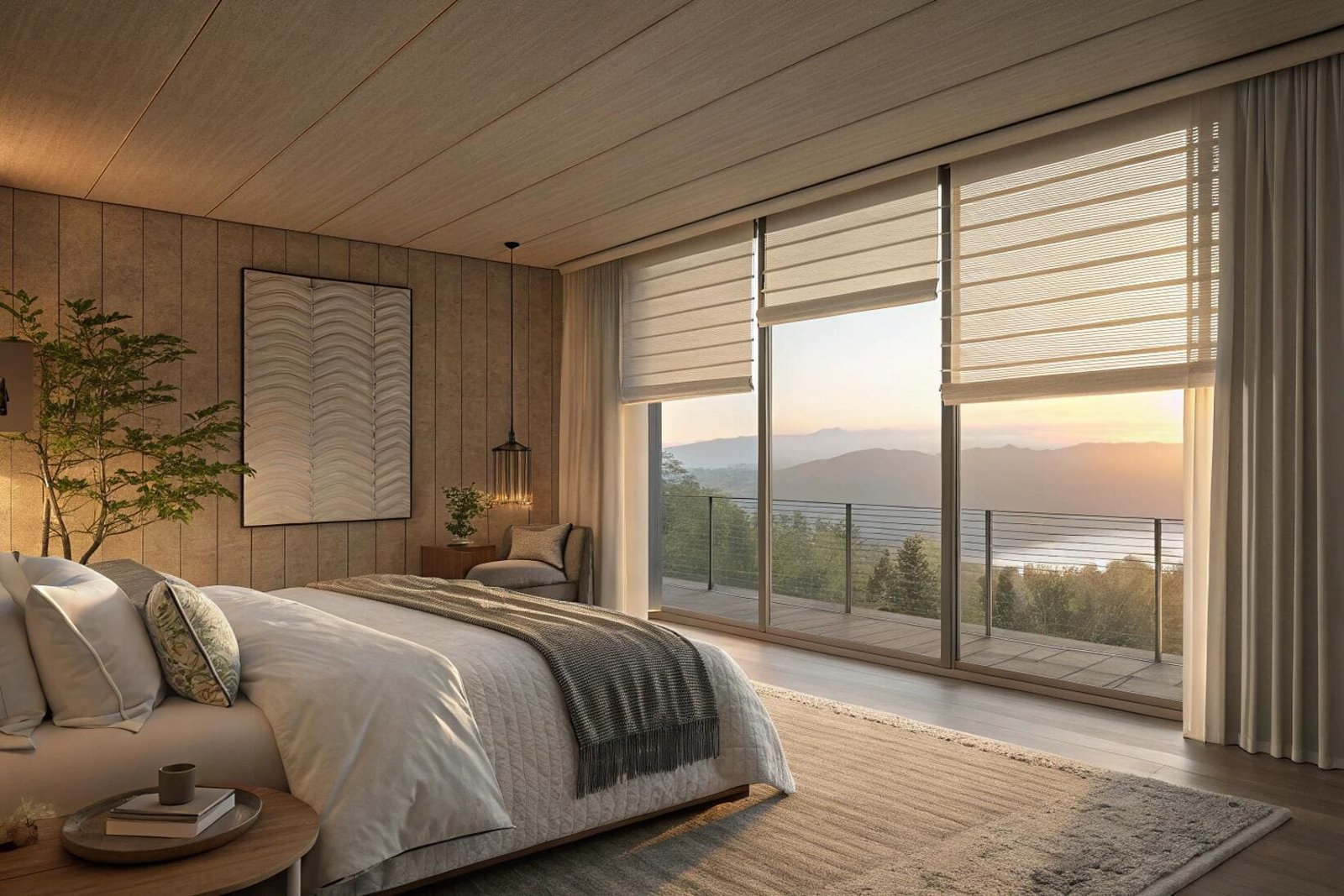
The demand for peaceful environments in modern buildings has pushed motor technology beyond basic functionality toward acoustic excellence[^2]. Understanding the science behind quiet motor design helps specify the right solution for noise-sensitive applications.
Are motorized blinds noisy?
Many project buyers hesitate to specify motorized blinds due to concerns about operational noise disrupting occupants. This perception often stems from experience with entry-level systems that prioritize cost over acoustic performance.
Modern motorized blinds with quality motors operate between 35-50 decibels, quieter than normal conversation. Premium systems achieve noise levels comparable to soft breathing, while budget motors may produce 60+ decibels. The difference lies in motor quality, gear precision, installation method, and environmental factors that amplify or dampen sound transmission.

Motor noise results from several mechanical factors working together. The electric motor itself generates electromagnetic noise as current flows through windings. Gear mechanisms transfer this rotation to the blind system, potentially creating additional friction-based sounds. Control electronics may produce switching noise during operation.
Quality manufacturers address these issues through multiple engineering approaches. Somfy's Sonesse motors achieve 50 decibel operation through precision gear cutting and sound dampening materials. Lutron's DC motors[^3] operate below 38 decibels using optimized magnetic field design and vibration isolation. The Nice Era Edge AC motor reaches 35 decibels through advanced acoustic engineering.
Environmental factors significantly impact perceived noise levels. Hard surfaces like glass, concrete, and metal amplify motor sounds through reflection and resonance. Soft furnishings, carpeting, and acoustic treatments absorb sound energy, reducing perceived volume. Installation quality affects vibration transmission to building structures.
Window size and fabric weight influence operational noise. Larger blinds require more motor torque, potentially increasing gear noise. Heavy fabrics create additional mechanical stress, while lightweight materials operate more quietly. Proper motor sizing ensures optimal performance without strain that could increase noise levels.
What are the best blinds for noise reduction?
Selecting blinds that minimize both operational noise and external sound transmission requires understanding acoustic properties of different blind types and their motor systems. The best solutions combine quiet motors with sound-absorbing materials.
Cellular honeycomb shades with ultra-quiet motors provide superior noise reduction through their air-pocket construction that absorbs sound waves. Roman shades with thick fabric folds also excel at noise dampening. For motor systems, DC-powered units with precision gears typically operate 10-15 decibels quieter than standard AC motors[^4].
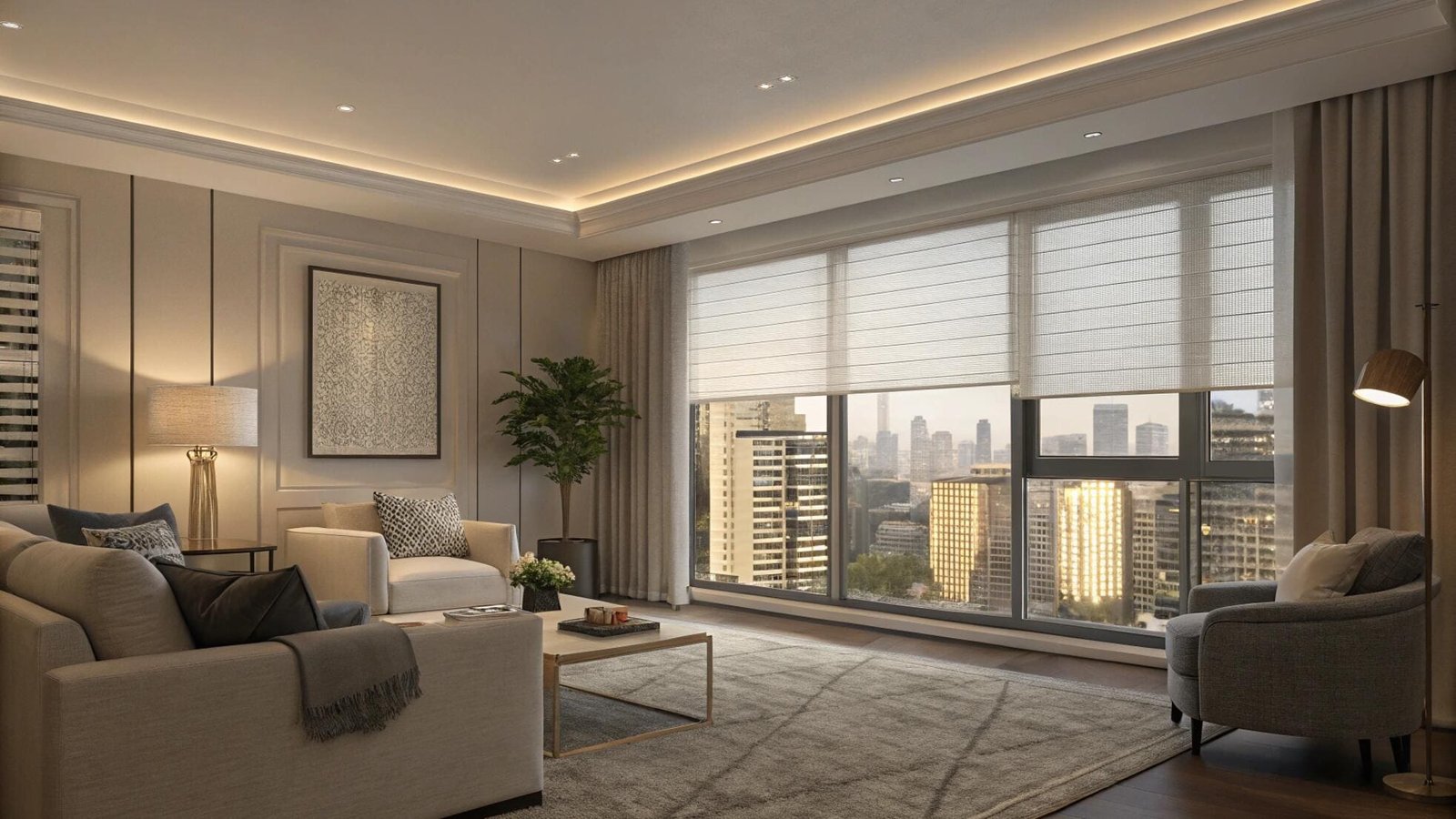
Cellular honeycomb shades lead noise reduction capabilities through their unique construction. The hexagonal air pockets within the fabric create natural sound barriers that trap and absorb acoustic energy. Double-cell designs provide even greater sound dampening through additional air layers. When combined with whisper-quiet motors, these systems deliver exceptional acoustic performance.
Roman shades offer another excellent option for noise-sensitive environments. The fabric folds create irregular surfaces that break up sound waves, reducing reflection and transmission. Thick, dense fabrics enhance this effect significantly. Blackout Roman shades provide the best acoustic performance due to their heavy material construction.
Motor selection dramatically impacts overall noise performance. DC motors typically operate quieter than AC systems due to smoother electrical current flow and reduced electromagnetic interference. Lutron's DC motors achieve near-silent operation through advanced magnetic design and vibration isolation[^5]. Battery-powered systems eliminate electrical noise entirely during operation.
Roller shades can achieve quiet operation when paired with premium motors, though they provide less inherent sound absorption than cellular or Roman styles. The key lies in fabric selection - dense, textured materials perform better acoustically than thin, smooth fabrics. Blackout roller shades offer good sound dampening properties.
Installation method affects noise transmission significantly. Inside-mount installations typically produce less noise transmission to surrounding structures. Soft mounting hardware reduces vibration transfer. Professional installation ensures proper motor sizing and mounting techniques that minimize operational noise.
How quiet should motorized blinds be?
Establishing appropriate noise standards for motorized blinds depends on application requirements, occupant sensitivity, and environmental context. Different spaces have varying acoustic needs that influence motor selection criteria.
Residential applications should target motors operating below 40 decibels for general living areas and under 35 decibels for bedrooms. Commercial spaces can typically accommodate 45-50 decibel operation, while healthcare and hospitality environments require ultra-quiet systems under 35 decibels to avoid disturbing patients or guests.
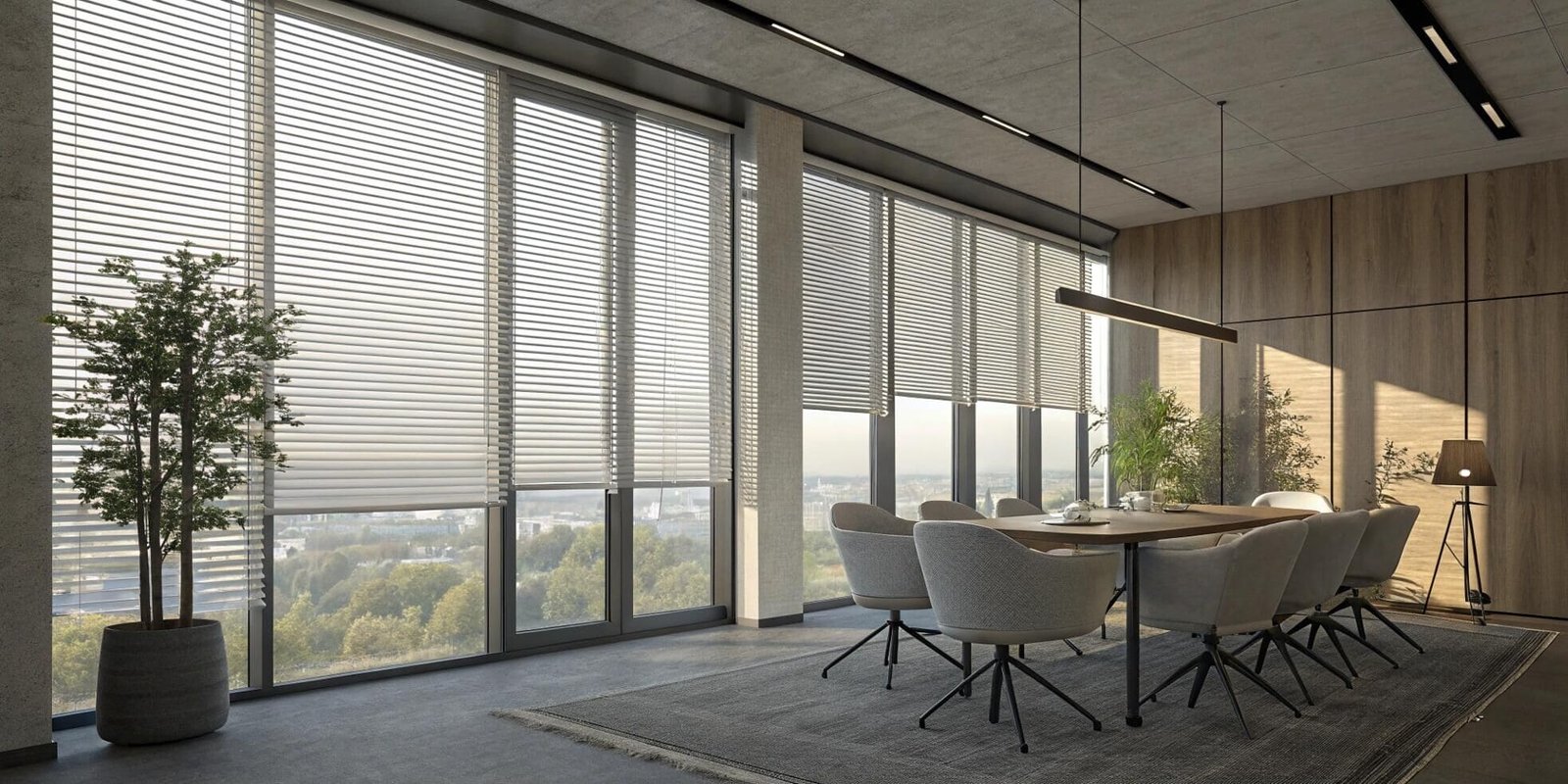
Bedroom applications demand the quietest possible operation. Sleep environments require motors operating below 35 decibels to avoid disrupting rest patterns. This level approximates soft breathing or rustling leaves, barely perceptible to occupants. Premium systems from Somfy, Lutron, and specialized quiet motor manufacturers achieve these performance levels.
Living areas and offices can accommodate slightly higher noise levels, typically 40-45 decibels. This range remains below normal conversation volume while providing reliable operation. Most quality motor systems fall within this range when properly installed and maintained.
Healthcare facilities have unique acoustic requirements. Patient rooms, surgery centers, and treatment areas need ultra-quiet operation to avoid disrupting healing environments. Motors operating above 35 decibels may interfere with medical equipment or patient comfort. Specialized healthcare-grade motors often incorporate additional sound dampening features.
Hospitality applications prioritize guest experience, requiring quiet operation comparable to residential bedroom standards. Hotels, resorts, and conference facilities typically specify motors below 35 decibels to maintain peaceful environments. Restaurant and retail applications can accommodate higher noise levels depending on ambient sound conditions.
Conference rooms and presentation spaces require consideration of operational timing. Motors may operate during presentations, making quiet operation essential. Systems with adjustable speed settings allow slower, quieter operation during sensitive activities while maintaining normal speed for routine adjustments.
What causes noise in motorized window treatments?
Understanding noise sources in motorized blind systems enables better specification and troubleshooting. Multiple mechanical and electrical components contribute to overall acoustic output, each requiring different mitigation approaches.
Primary noise sources include motor electromagnetic fields, gear train friction, bearing wear, vibration transmission through mounting hardware, and fabric movement during operation. Secondary factors include electrical switching noise from control systems, resonance amplification through building structures, and environmental acoustic reflection from hard surfaces.
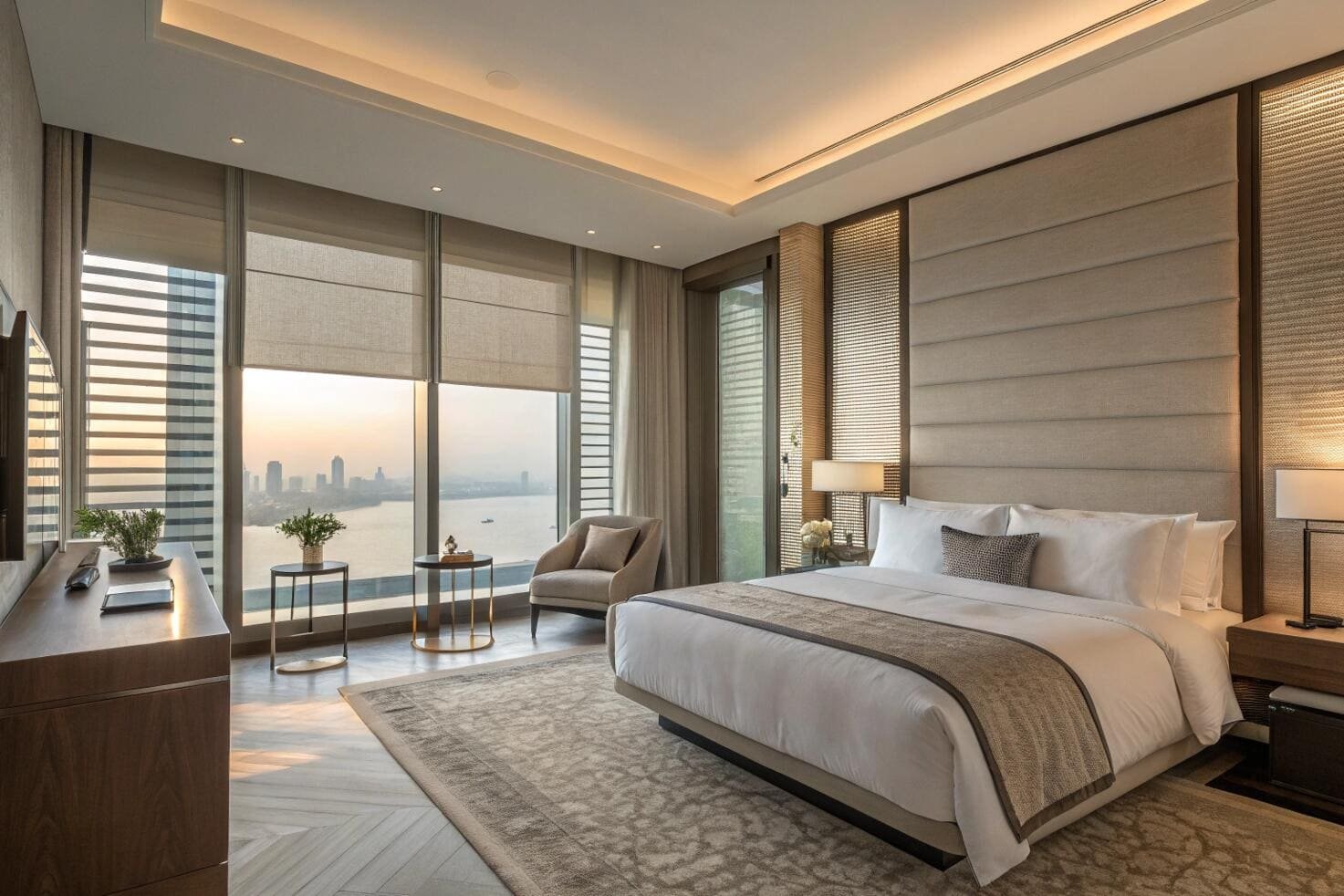
Electric motor noise originates from electromagnetic field interactions within the motor housing. AC motors produce more electromagnetic noise due to alternating current characteristics, while DC motors operate more quietly through smoother current flow. Brushed motors generate additional noise from carbon brush contact, while brushless designs eliminate this friction source.
Gear train mechanisms transfer motor rotation to blind operation, potentially creating multiple noise sources. Poorly manufactured gears with imprecise cutting create friction and vibration. Inadequate lubrication increases gear noise over time. Plastic gears typically operate more quietly than metal but may have shorter lifespans. Precision-cut metal gears with proper lubrication provide the best long-term quiet operation.
Bearing quality significantly impacts noise levels throughout the motor's operational life. Cheap bearings create friction noise and wear rapidly, increasing noise over time. Quality ball bearings or sleeve bearings maintain quiet operation for years. Sealed bearings prevent contamination that could increase friction and noise.
Mounting hardware affects noise transmission to building structures. Rigid mounting can transmit motor vibrations directly to walls or window frames, amplifying perceived noise. Vibration isolation mounts or soft mounting materials reduce this transmission. Proper motor sizing prevents overloading that could increase vibration and noise.
Control system electronics may generate switching noise during operation. Cheap electronic components create electrical interference and audible noise. Quality control systems use filtered power supplies and shielded components to minimize electrical noise. Smart control systems with variable speed capability can reduce noise through slower operation when quiet performance is priority.
Which motor types are quietest for automated blinds?
Motor technology varies significantly in acoustic performance, with different designs offering distinct advantages for quiet operation. Understanding these differences helps specify the optimal solution for noise-sensitive applications[^6].
DC brushless motors provide the quietest operation, typically 5-10 decibels below comparable AC systems. Tubular motors with precision gear trains outperform external motor designs. Battery-powered systems eliminate electrical noise entirely, while hardwired systems with quality power filtering achieve comparable performance. Premium brands like Somfy, Lutron, and specialized quiet motor manufacturers lead acoustic performance.
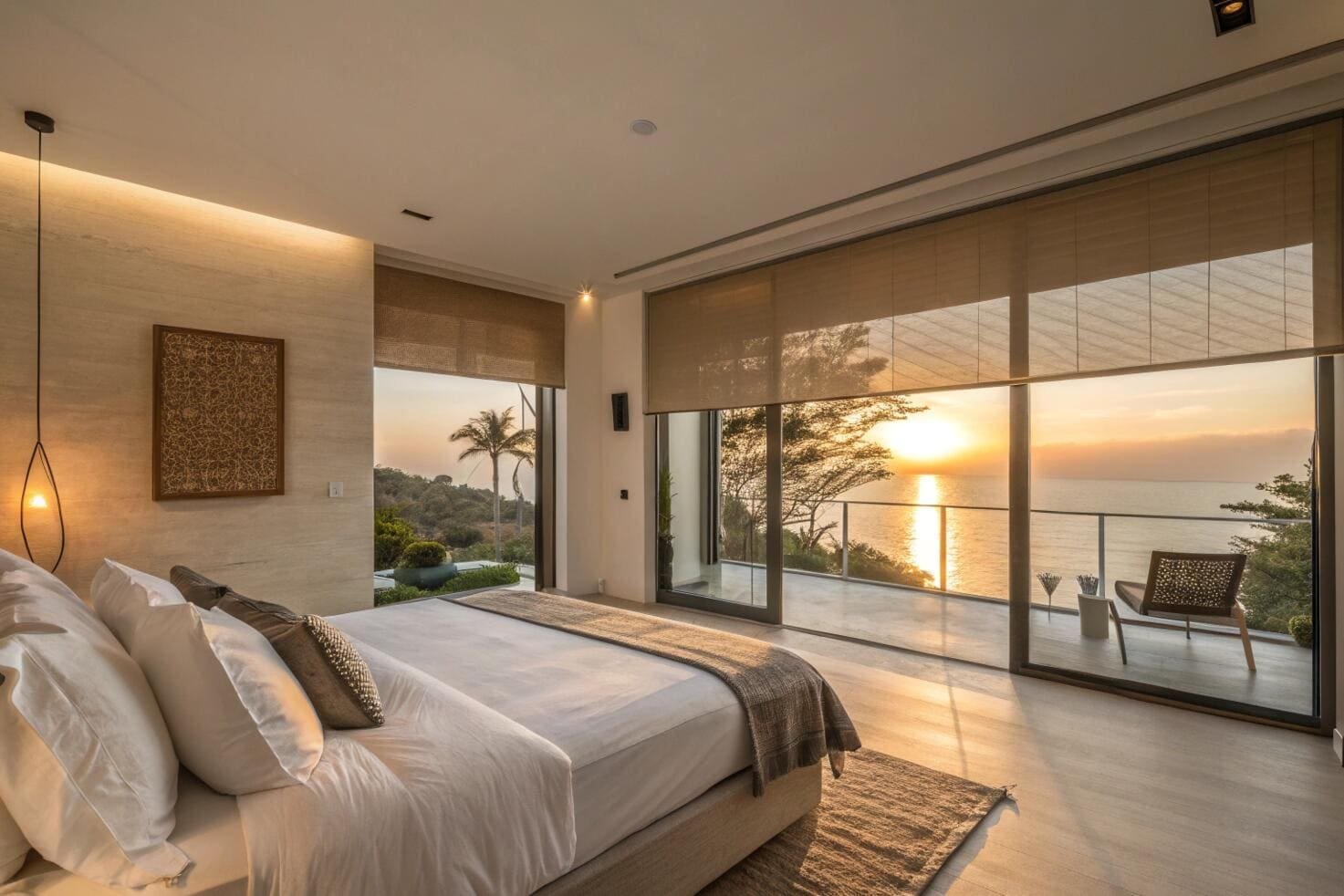
DC brushless motors represent the gold standard for quiet operation. These systems eliminate carbon brush friction while providing smooth, consistent power delivery. Lutron's DC motors achieve sub-38 decibel operation through advanced magnetic design and precision manufacturing. The absence of brush contact eliminates a major noise source while extending motor life significantly.
Battery-powered motors offer unique acoustic advantages by eliminating electrical infrastructure noise. These systems operate independently of building electrical systems, avoiding power line interference and electrical switching noise. Premium battery systems achieve operation below 35 decibels while providing months of operation between charges. Solar charging options eliminate maintenance requirements entirely.
Tubular motors integrate all components within the blind headrail, reducing external noise transmission. The enclosed design contains operational sounds while protecting components from environmental contamination. Quality tubular motors use precision-manufactured gears and sound-dampening materials to achieve exceptional quiet operation.
AC motors can achieve acceptable noise levels when properly engineered. Somfy's Sonesse AC motors reach 50 decibel operation through precision manufacturing and sound dampening. While slightly louder than DC alternatives, quality AC motors provide reliable operation with acceptable acoustic performance for most applications.
Stepper motors offer precise positioning control but typically operate at higher noise levels due to their stepping motion characteristics. These motors work best in applications where positioning accuracy outweighs acoustic requirements. Recent advances in stepper motor design have reduced noise levels significantly.
Worm gear motors provide high torque output but may generate more noise than planetary gear designs. However, quality worm gear systems with precision manufacturing and proper lubrication can achieve acceptable noise levels while offering superior holding torque for large or heavy blinds.
How to choose ultra-quiet motors for bedroom blinds?
Bedroom applications represent the most demanding acoustic requirements for motorized blinds. Sleep environments require careful consideration of noise levels, operational timing, and long-term performance to ensure occupant comfort and satisfaction.
Select DC brushless motors rated below 35 decibels with precision gear trains and vibration isolation. Prioritize battery-powered systems to eliminate electrical noise, or specify hardwired systems with filtered power supplies. Choose motors with variable speed control for ultra-quiet nighttime operation and slow-start features to minimize initial operational noise.
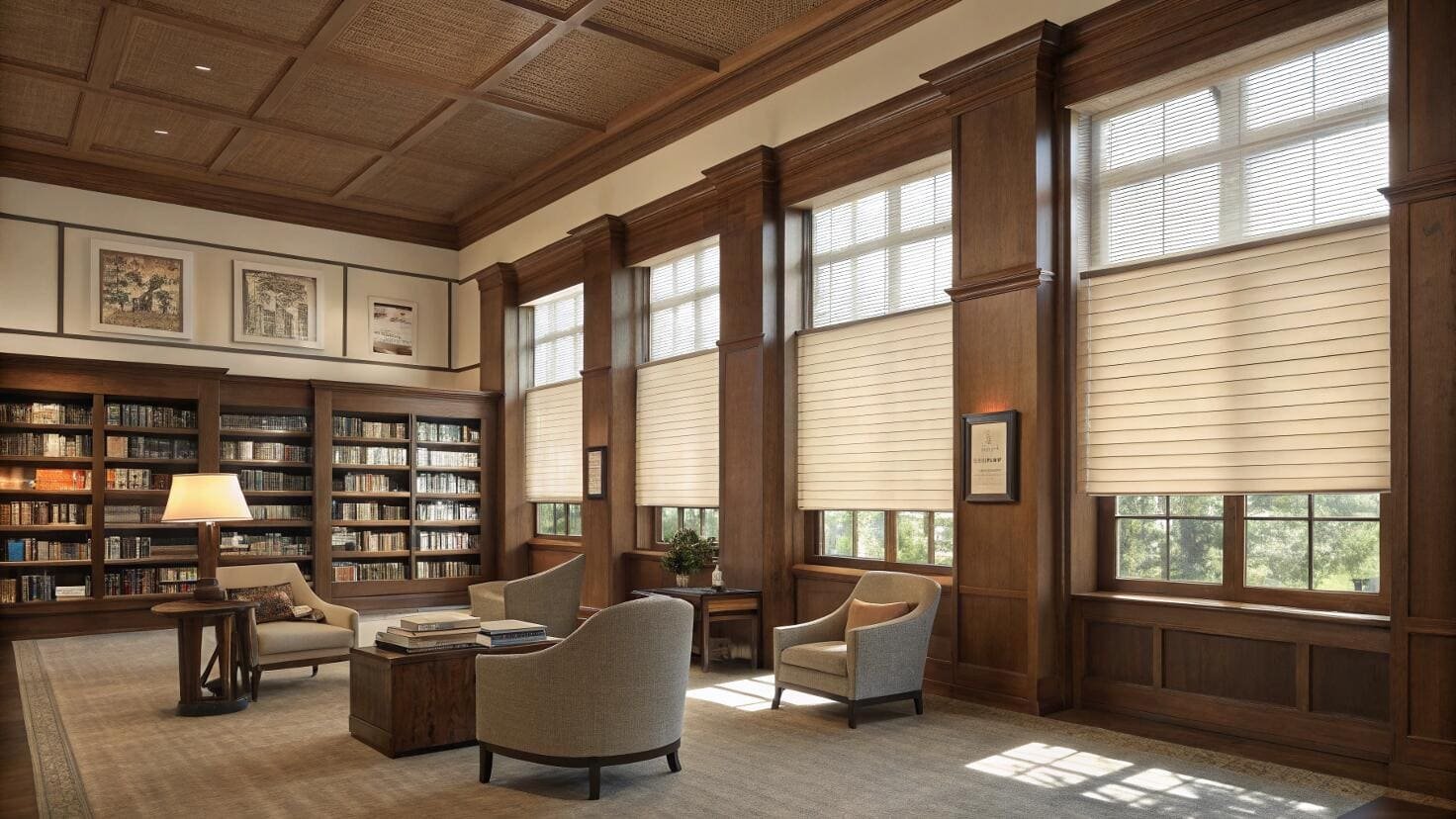
Motor specification begins with establishing noise thresholds appropriate for sleep environments. Target motors operating below 35 decibels, comparable to soft breathing or gentle air movement. This threshold ensures minimal sleep disruption while maintaining reliable automation functionality. Premium manufacturers provide detailed acoustic specifications for comparison.
Power source selection significantly impacts bedroom acoustic performance. Battery-powered systems eliminate electrical infrastructure noise entirely, providing the quietest possible operation. Lithium-ion battery systems offer months of operation between charges while maintaining consistent performance. Solar charging options reduce maintenance requirements for hard-to-reach installations.
Hardwired systems require careful electrical design to minimize noise. Specify filtered power supplies to eliminate electrical interference. Use dedicated circuits to avoid power line noise from other building systems. Quality transformers and electronic filtering reduce electrical noise transmission through building wiring.
Motor sizing affects acoustic performance substantially. Oversized motors operate at lower stress levels, reducing gear noise and extending operational life. Calculate fabric weight, wind load, and operational frequency to determine optimal motor capacity. Specify motors with 25-50% capacity margin above calculated requirements for quietest operation.
Control system features enhance bedroom acoustic performance. Variable speed control allows ultra-slow operation during sensitive periods like early morning or late evening. Programmable acceleration reduces startup noise compared to instant full-speed operation. Group control enables synchronized operation of multiple blinds without repeated motor cycling.
Installation quality directly impacts long-term acoustic performance. Specify professional installation with vibration isolation mounting. Use soft mounting materials to reduce vibration transmission to building structures. Ensure proper motor alignment and secure mounting to prevent rattling or movement during operation.
Extended FAQ Section
What is the quietest motorized blind motor available?
The quietest motorized blind motors currently achieve operation below 30 decibels, with premium DC brushless systems from manufacturers like Nice Era Edge AC (35dB) and specialized ultra-quiet designs reaching near-silent performance levels comparable to soft breathing.
Ultra-quiet motors utilize advanced engineering including precision-manufactured gears, magnetic field optimization, vibration isolation, and sound-dampening materials. Battery-powered DC brushless motors typically achieve the lowest noise levels by eliminating electrical infrastructure noise while providing smooth, consistent operation. Professional installation with proper mounting techniques ensures optimal acoustic performance.
Quality differences between manufacturers significantly impact long-term noise performance. Premium systems maintain quiet operation throughout their lifespan through superior bearing quality and precision manufacturing. Entry-level motors may initially operate quietly but develop noise over time due to component wear and manufacturing tolerances.
Motor technology continues advancing toward even quieter operation. Emerging designs incorporate active noise cancellation, advanced materials science, and AI-optimized gear ratios. These developments promise even lower noise levels while maintaining reliability and performance standards required for commercial applications.
How does installation quality affect motorized blind noise levels?
Installation quality dramatically impacts both initial and long-term noise performance of motorized blind systems. Proper mounting techniques, vibration isolation, and motor alignment determine whether a quality motor operates at specification or becomes a noise source.
Professional installation reduces noise levels by 10-20 decibels compared to improper mounting through vibration isolation techniques, secure hardware attachment, and proper motor alignment. Soft mounting materials prevent vibration transmission to building structures, while rigid mounting without isolation can amplify motor noise significantly through structural resonance.
Mounting surface preparation affects noise transmission substantially. Solid mounting to structural elements like steel or concrete provides stability but may transmit vibrations. Vibration isolation pads or soft mounting materials break this transmission path while maintaining secure attachment. Professional installers understand these acoustic principles and apply appropriate techniques.
Motor alignment impacts gear train operation and noise generation. Misaligned motors create additional stress on gear mechanisms, increasing friction and operational noise. Proper alignment during installation ensures optimal mechanical operation and extends motor life while maintaining quiet performance throughout the system's operational lifespan.
Hardware quality and installation technique affect long-term performance. Quality mounting brackets resist loosening over time, preventing rattling and movement that creates noise. Professional installation includes proper torque application and hardware selection appropriate for specific mounting conditions and structural requirements.
Can smart home integration affect motorized blind noise levels?
Smart home integration can both improve and complicate noise management in motorized blind systems depending on control system design and programming approaches. Advanced integration features offer noise reduction capabilities through intelligent operational scheduling and variable speed control.
Smart integration reduces perceived noise through automated scheduling that avoids operation during sensitive periods, variable speed control for ultra-quiet operation when needed, and group synchronization that minimizes repetitive motor cycling. However, poor integration with frequent connectivity polling or constant status updates may increase electrical noise in some systems.
Scheduling capabilities allow operation during acceptable noise periods while avoiding disruption during sleep, meetings, or quiet activities. Smart systems can automatically adjust to occupancy patterns, seasonal daylight changes, and user preferences without manual intervention. This intelligent timing reduces the impact of operational noise on building occupants.
Variable speed control represents a key advantage of smart integration for noise management. Systems can automatically reduce operational speed during quiet periods, operating at slower speeds that generate less mechanical noise. Advanced controllers detect ambient noise levels and adjust motor speed accordingly to maintain appropriate acoustic performance.
Group synchronization reduces repetitive motor cycling that can create cumulative noise impacts. Instead of individual blinds operating at different times throughout the day, smart systems coordinate simultaneous operation across multiple windows. This approach concentrates operational noise into brief periods rather than spreading it throughout the day.
However, connectivity requirements may introduce new noise sources. WiFi-enabled systems with frequent status polling can generate electrical interference. Poorly designed smart controllers may produce switching noise during communication cycles. Quality smart systems minimize these issues through optimized communication protocols and filtered electronics.
System programming affects long-term noise perception through intelligent automation that anticipates user needs without manual intervention. Well-programmed systems operate proactively based on schedules, weather conditions, and occupancy patterns, reducing the need for ad-hoc adjustments that might occur during inappropriate times. This predictive operation maintains comfort while respecting acoustic requirements of different spaces and activities.
Conclusion
Ultra-quiet motorized blinds achieve whisper-soft operation through advanced motor technology, precision engineering, and professional installation. DC brushless systems below 35 decibels provide exceptional acoustic performance for noise-sensitive environments while maintaining reliable automation and smart integration capabilities.
Transform Your Space with Whisper-Quiet Automation
Stop compromising between convenience and peace. Our ultra-quiet motorized blind systems deliver seamless automation without acoustic disruption, perfect for bedrooms, healthcare facilities, and premium commercial spaces.
Get detailed specifications for whisper-quiet motors, acoustic performance data, and professional installation guidance tailored to your project's noise requirements. Our technical team provides comprehensive support including sound level testing, motor selection criteria, and integration specifications.
Contact our quiet technology specialists today for your custom solution:
info@velablinds.com
Experience the perfect balance of automation and tranquility in your next project.
---
[^1]: Discover the advanced technology behind Somfy Sonesse motors for superior quiet operation.
[^2]: Understand the importance of acoustic excellence in creating peaceful environments with motorized blinds.
[^3]: Learn about Lutron's innovative DC motors that provide whisper-quiet performance for your blinds.
[^4]: Compare the acoustic performance of AC motors with their DC counterparts.
[^5]: Understand how vibration isolation techniques can enhance the quietness of motorized blinds.
[^6]: Find out how to choose the right motorized blinds for noise-sensitive environments.Partner with VelaBlinds for Your Next Project
Smart window treatments shouldn't be complicated. After working with 500+ distributors and contractors worldwide, I've streamlined the process to get you quality products, competitive pricing, and reliable support - every time.
Why project professionals choose VelaBlinds:
- ✅ Fast, Accurate Quotes - Detailed specs and pricing within 24 hours
- ✅ Transparent Pricing - No hidden fees, volume discounts clearly outlined
- ✅ Quality Assurance - Direct partnerships with certified OEM manufacturers
- ✅ Project Support - Dedicated account manager from quote to delivery
Start your next project:
📧 Quick Quote: Send your requirements to info@velablinds.com
📱 Direct Contact: WhatsApp +86 137 2012 8317
🌐 Browse Solutions: https://velablinds.com/
📁 Product Resources: Access spec sheets, catalogs & project files
Jimmy Chen, Founder
"I built VelaBlinds to solve the real challenges I faced as a project buyer - long lead times, unclear specs, and unreliable suppliers. Let's discuss how we can power your projects with smarter blinds."
Serving distributors and contractors across North America, Europe, and Australia since 2018.

